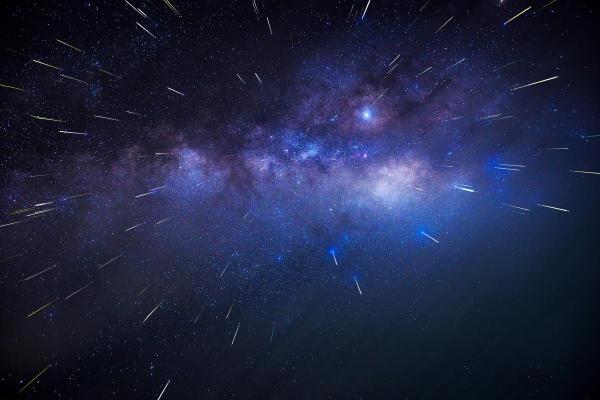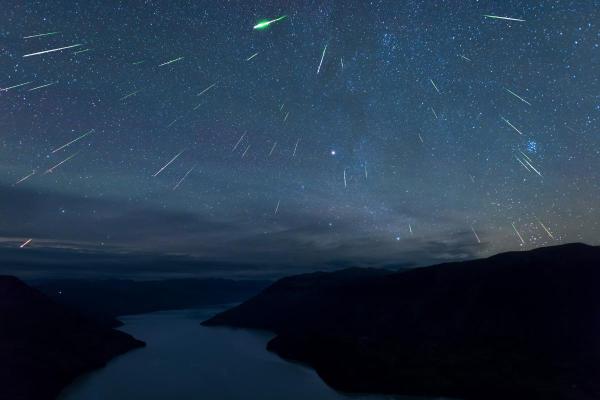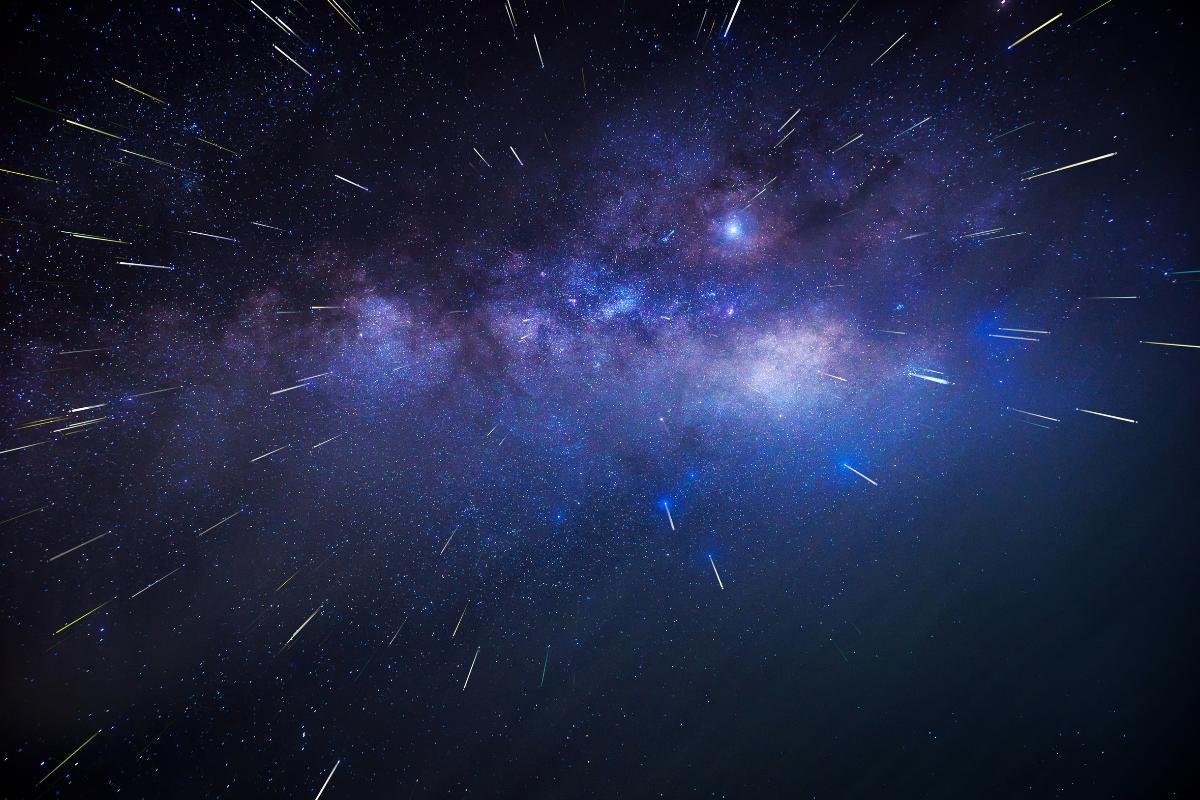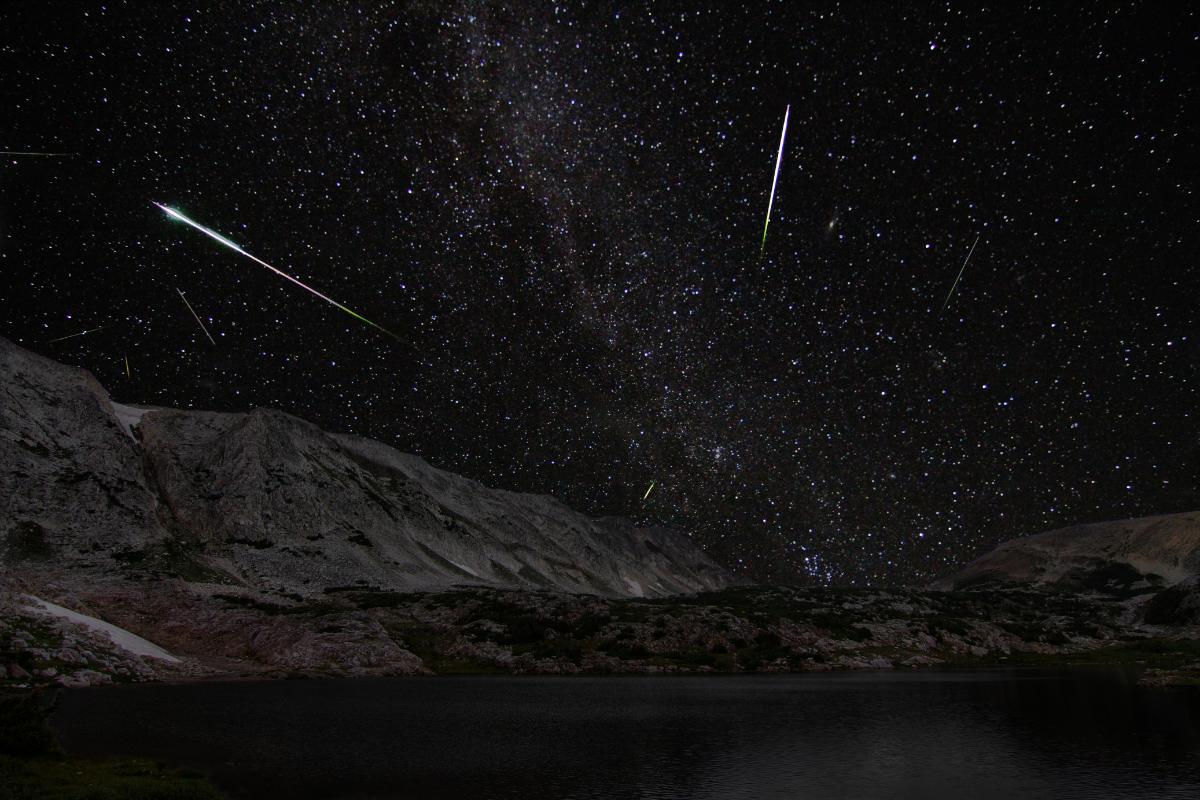What Are Perseids or Tears of St. Lawrence?


It is no secret that the Perseid meteor shower, also referred to as the tears of Saint Lawrence, is one of the most popular events in August. The spectacle unfolds as Earth crosses the path of Comet Swift-Tuttle, intersecting its orbit. Consequently, particles of dust and debris from the comet's wake collide with Earth's atmosphere, resulting in the meteor shower. Questions arise about how, when, and where to witness this phenomenon.
The following article by thedailyECO explains what the Perseid meteor shower is, as well as how, when, and where to witness this phenomenon.
What are Perseids or tears of St. Lawrence?
The Perseids meteor shower, an annual celestial spectacle, graces our skies in early August. This captivating event occurs when Earth traverses the path littered with remnants left by Comet Swift-Tuttle. As these minuscule fragments collide with our atmosphere, they burst into radiant brilliance, forming what we fondly know as "shooting stars."
The name "Perseids" stems from the constellation Perseus, as these meteors seemingly radiate from that direction in the sky. While the meteors can be observed across the night sky, they trace their origins back to this mythological hero, adding an enchanting layer to their cosmic ballet.
Optimal viewing conditions call for escaping the glow of city lights and embracing the quiet beauty of nature. On cloudless, dimly lit nights, the Perseids' splendor truly flourishes. It's a reminder of the captivating rhythm of the universe, inviting us to pause and marvel at the fleeting wonders that light up our night skies.
For a deeper understanding of the mesosphere and its characteristics, make sure to explore this additional article.

What is the best time to see Perseid meteor shower?
Even though the Perseids meteor shower occurs from July 16 to August 24, the peak activity is expected around August 11, 12, and 13.
Although specific stargazing dates can be approximated, it's recommended to prioritize the days encompassing the meteor shower's peak. During this time, expect to observe a meteor count ranging from 60 to 100 per hour, with variations influenced by factors such as time and location.
As mentioned before, the event coincides with the feast day of Saint Lawrence on August 10. Saint Lawrence, a Christian martyr, was famously executed by being roasted alive on a gridiron during the Roman Empire's persecution of Christians. The legend places his martyrdom on August 10, aligning with the meteor shower's peak.
Where can you view the Perseid meteor shower?
You can observe the Perseid meteor shower from various locations around the world, provided you have access to a dark and unobstructed night sky.
The key to successful viewing is to find a spot away from the glare of city lights, which can hinder your ability to see the meteors clearly. Here are some ideal places to catch the Perseids meteor shower:
- Countryside: rural areas, far from the light pollution of urban centers, offer some of the best viewing conditions. Seek out open fields or quiet country roads for an unobstructed view.
- National parks: many national parks and natural reserves prioritize preserving the natural night sky. These areas often have designated stargazing spots where you can enjoy the Perseids in their full splendor.
- Beaches: coastal areas can provide breathtaking views of the meteor shower. The expansive horizon and minimal light pollution make beaches an excellent choice for stargazing.
- Mountains: higher altitudes not only offer clearer skies but also provide an elevated vantage point for observing the meteors. Consider heading to a mountainous region for an unforgettable experience.
- Remote areas: anywhere far from city lights, such as remote villages or cabins, can provide an optimal setting for meteor shower observation.
- Astronomical observatories: if accessible, local astronomical observatories or clubs may organize special events for meteor shower watching. These locations often have telescopes and knowledgeable guides to enhance your experience.
- Your backyard: even if you're not in an ideal stargazing location, your own backyard can still offer a glimpse of the Perseids. Take measures to minimize light pollution, such as turning off outdoor lights, and you might be surprised by what you can see.
Remember that the most crucial factor is finding a spot with minimal light pollution, as this greatly enhances your chances of witnessing the meteor shower in all its brilliance.

How to watch the Perseid meteor shower?
Here are some valuable tips to ensure a rewarding Perseids meteor shower viewing experience and maximize the beauty of this celestial event:
- Seek darkness: to fully embrace the Perseids, escape the luminous city lights and venture to a location with minimal light pollution. This will enable your eyes to adjust to the darkness and unveil more meteors.
- Optimal timing: while the peak activity of the Perseids generally occurs around August 11-13, meteors can be visible before and after these dates. For prime viewing, aim for the hours after midnight and before dawn when the night sky is at its darkest, and the Perseus constellation reigns high above.
- Comfort essentials: enhance your experience by bringing along a blanket, recliner, or even a hammock. These additions offer a cozy vantage point for gazing upwards without straining your neck.
- Night adaptation: arriving early and allowing your eyes to adapt to the darkness is crucial. It may take approximately 20-30 minutes for your vision to fully adjust to the lack of artificial light.
- Unaided vision: unlike other celestial observations that benefit from telescopes or binoculars, the Perseids are most captivating when observed with the naked eye. Binoculars or telescopes can restrict your field of view and detract from witnessing multiple meteors streaking across the sky.
- Weather-appropriate attire: dress warmly, even during summer nights, as temperatures can drop, especially in remote areas. Additionally, consider carrying insect repellent if needed.
- Exercise patience: while the meteor rate can fluctuate, remain patient if you don't witness a high volume of meteors initially. The Perseids exhibit periods of increased activity intertwined with moments of calm.
- Digital resources: to access specific information about the timing and location of the Perseids, explore astronomy apps or follow social media accounts dedicated to sharing updates on astronomical occurrences.
Gain further insights into the concept of celestial bodies by delving into this other article.
If you want to read similar articles to What Are Perseids or Tears of St. Lawrence?, we recommend you visit our Facts about Earth and the universe category.







